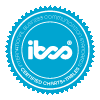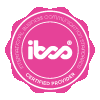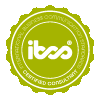Top and bottom 5 of International Business Communication Standards
12 videoclips of Rolf Hichert’s presentation at the ‘6. International Controlling Conference in Croatia’ on November 15, 2018 in Zagreb (HR)
Top 1 – Title concept
Unified and well-structured titles will help business executives making correct decisions. Every report, every dashboard, every presentation, every chart and every table in business and finance should get an identifying title at the same position and in the same style. This IBCS principle applied consistently helps top managers such as CEO, CFO and other members of the Board of Directors as well as many other decision makers.
Top 2 – Time and structure
We use lines, bars, and columns most frequently business charts. The vast majority of them show either time series or structure comparisons.
Watch the IBCS principle for proper selection of charts and tables showing time and structure – two major concepts for the visualization of profit and loss, cashflow, assets and liabilities, or KPIs.
Top 3 – Scenarios
IBCS recommends using unified patterns for different scenario types such as previous year, actual, budget or forecast: Solid fill for actual data, outlined columns or bars for plan figures, and hatched fill for forecast. Show your figures with the right pattern in every statement: sales, costs, investment, volume, headcount. Not different colors, but different patterns.
Top 4 – Variances
Business decisions manager are interested in variances against previous year, against plan or even against competitors. IBCS suggests using red and green color for variances only. Green is good, and red is bad with respect to a given target. This is how you create the transparency that CFOs and other decision makers need.
Top 5 – Scaling
Consistent scaling is key for proper visual perception – and a challenge for every creator of reports and dashboards. Following IBCS’ scaling suggestions will result in a high level of transparency in business reports, whether from finance, sales, human resources, logistics or any other domain. In contrast, poorly scaled charts and manipulated scales can cause incorrect management decisions.
Example: Waterfall
This video will inspire management accountants / FP&A / controllers to change the way they visualize income and other statements: use vertical waterfalls to discuss revenues, costs, results and cashflow more efficiently. The combination of tables with embedded graphs allows you to keep both: transparent provision of all data, and quick understanding of your key message.
Bottom 1 – Wrong visualization
Not every type of visual is good. Be very careful with pie charts, radar charts, or sparklines. Watch the video where Rolf Hichert discusses a bar chart that Tableau proposes as a best practice for visualisation. Rolf’s makeover improves the visual comparison of sales and quota by sales persons but it would also work by departments, by regions, by brands or by products. His IBCS advice actually concerns any structural comparisons in finance, HR, logistics, production, or marketing reports and dashboards.
Bottom 2 – Misleading scaling
Many charts that we see on tv, in magazines, in many books, are misleading – they are not showing the data properly. The same with many business reports presented in Power Point, Excel, or Business Intelligence tools. But if we do not apply proper scaling then the receivers of our reports such as CEOs or CFOs will not get the right message. And at worst, they make the wrong decisions.
Bottom 3 – Cluttered layout
When you want to focus on something then the layout of the surrounding should not be colorful. Excessive corporate design often hinders efficient reporting. IBCS suggests to use color for a highlighting purposes only. Avoiding clutter takes away the noise. Create clear visualizations, and your board of directors will understand them immediately.
Bottom 4 – Low information density
It is much easier to understand ten times more information on one page than to gather the same information from ten different pages. The more context you add to your dashboard or presentation slide, the easier it is to understand the situation. It takes reports with high information density to tell stories to managers.
Bottom 5 – Missing message
An important thing about reporting is to understand the difference between dashboards for analytics, and reports that convey analytics results. In this last case we should know what we want to say. Do we have something to say? Then our message is much more important than the slides, pages, or screens we present. The charts included should support, and ideally prove, the message. Instead we see people having to explain their incomprehensible charts. Because there is no visual concept and no concept of meaning – it is just about making data look nice on the screen.
Summary: Need of standards
A report notation manual is a document that explains in detail how accountants / FP&A professionals should create charts and tables, what colors to use for what purpose, and all the other styles to be applied consistently in reports, presentations, and dashboards. Such a guide is a must for companies that are focused on high quality business communication.






